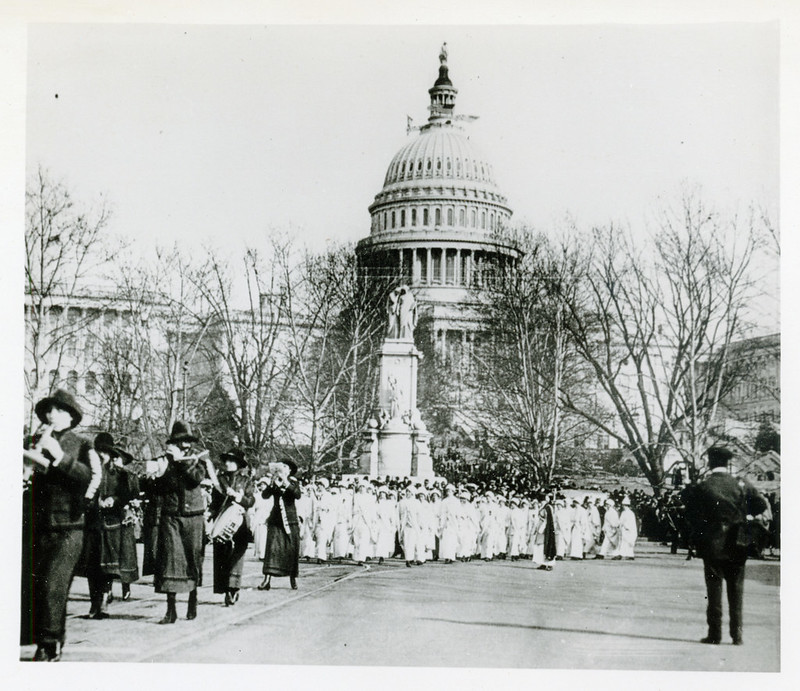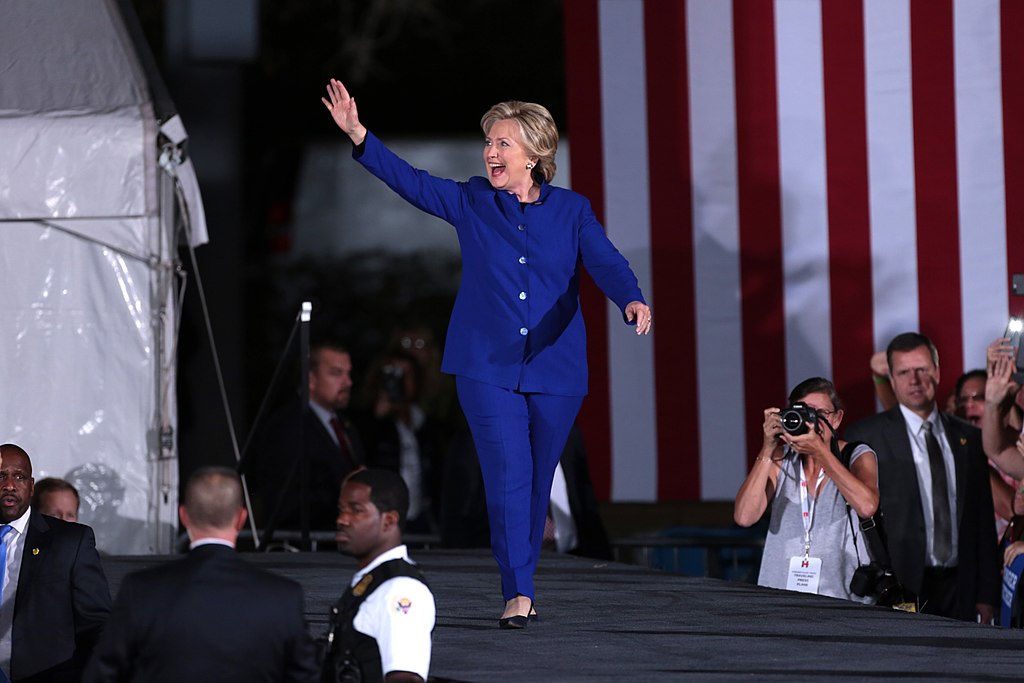It has taken a century after American women won the right to vote for one of them to finally ascend that ladder to the White House.
One of my favorite photographs of the vice president-elect features Kamala Harris with two little girls, all three of them clad in white. The adorable dancing duo featured with her are her great nieces, the daughters of her niece, Meena Harris.
As to why Kamala Harris picked a white pantsuit, look back on that dramatic moment in February this year, when the Democratic women members of Congress wore white to mark the 100th anniversary of the 19th Amendment during the State of the Union address.
Clearly, Senator Harris’s decision to don these colors is hugely symbolic, connecting her election to the fight for women’s rights—especially during the centenary year of women’s suffrage in the U.S. It has taken a century after American women won the right to vote for one of them to finally ascend that ladder to the White House. Moreover, it is a political coup for Senator Harris’s party to have a woman be elected into the second most prominent political position in the country during the 100 year anniversary of women’s suffrage.
The first woman to run for president in the U.S. was actually Victoria Woodhull in 1872, a half century before women won the vote. She ran under the banner of the Equal Rights Party—formerly the People’s Party—which supported equal rights for women and women’s suffrage. This was close to 50 years before the ratification of the 19th Amendment in 1920, when American women earned the right to vote. (This of course pertains largely to white women; it took many more years for women of color to be granted that right.)
It would be apt to mention here that numerous other countries had not only granted their women the right to vote soon after their nation became independent, but that they elected women as their heads of state over a half century ago. The first two women to be sworn in as heads of state—president and prime minister—were Sirimavo Bandaranaike and Indira Gandhi from the South Asian nations of Sri Lanka and India respectively, in the 1960s.
Why White?
Donning white has become a rite of passage for recent American women politicians. In the most memorable suffrage parade of the United States, Inez Milholland—considered by many to be the face of the suffrage movement in the nation—appeared in the Washington D.C suffrage parade of 1913 clad in a long white cloak, riding a white horse.

Shirley Chisholm donned suffragette white when she became the first African American woman elected to the U.S, Congress in 1968, and again when she ran for president in 1972. But it was two decades later that a woman candidate would dare to wear a pantsuit when she ran for VP: Geraldine Ferraro, who wore it in 1984 when she delivered her acceptance speech as the first female vice presidential candidate for a major party ticket.
However, it was former Secretary of State Hillary Clinton who made the pantsuit her signature piece during her presidential race in 2016—so much so that during that race, supporters created a Facebook page called Pantsuit Nation.

But what many forget is that this choice was not easy by any means. Previous first ladies, and successive ones too, typically donned feminine dresses and jewelry. Clinton’s choosing to wear pantsuits made her stand out (much as the French writer George Sand did, way back in the 19th century). It made history when she was featured in the official portrait as first lady, clad in a sleek black pantsuit.
But why choose white? The reason was, it was one of the main colors picked by the National Woman’s Party, an American political organization founded in 1913 by Alice Paul. The NWP had adopted white, gold and purple as its colors.
Its mission statement under its earlier incarnation as the Congressional Union for Woman’s Suffrage reads:
“The colors adopted by the union are purple, white and gold, selected for the significance they bear in the work the union has undertaken. Purple is the color of loyalty, constancy to purpose, unswerving steadfastness to a cause. White, the emblem of purity, symbolizes the quality of our purpose.”
Well aware of the centuries of women who came before her, Vice President-Elect Kamala Harris paid homage to the suffragists in her speech accepting her new position.
“All the women who worked to secure and protect the right to vote for over a century: One hundred years ago with the 19th Amendment, 55 years ago with the Voting Rights Act, and now, in 2020, with a new generation of women in our country who cast their ballots and continued the fight for their fundamental right to vote and be heard. Tonight, I reflect on their struggle, their determination, and the strength of their vision—to see what can be unburdened by what has been—I stand on their shoulders.”
You may also like:





